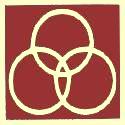The Practitioners Guide
for Organizing an Organization
Book Review
By Jennifer Byrne, Ph.D.
Family Business Experts

The Practitioners Guide for Organizing an Organization - What does it mean for an organization to be healthy and productive?
The Practitioner’s Guide for Organizing an Organization
is 169 pages that explain how organizations work efficiently, flexibly, and productively. Though it was written primarily as a handbook for users of Mackenzie’s online organizational diagnostic tool, it works also for anyone who desires to design or improve an organization. And that means any organization, whether for-profit or non-profit, large or small, publicly or privately held.
This book offers readers a new paradigm for understanding how organizations work, the problems all organizations face and tools for solving those problems. This new paradigm is called the Holonomic Model. Briefly, this model states that all parts of the organization are interdependent, so the degree of harmonious fit between and among all the parts determines the wholeness. Mackenzie, the author, of this book called this level of harmonious fit., holonomy.
If you want to see how your organization stacks up holonornically, you will need to examine several concepts. This book shows you how to do just that.
First of all, Mackenzie describes that there are two levels in any organization— the macro level of the entire organization and the employee level. For holonomy, both levels must be aligned in their planning and implementation.
Secondly, when the two levels of organization are congruent, there are six discernible characteristics that are highly evident. Mackenzie calls these Desired Organizational Characteristics. Those six characteristics can be broken down into 12 processes called Holonomic Processes. Those processes can be broken down into 29 Leadership Practices. ThIs analysis of characteristics, processes, and practices allows practitioners to identify specific decisions that contribute to the holonomy of the organization. All of these characteristics, processes, and practices are highly interdependent, so strength or weakness in any of these areas creates strengths or weaknesses in other parts of the organization. They are mutually reinforcing.
This book also examines the types of problems that all types of organizations face, what commonly causes those problems, and how to identify the types of problems. Ever practical, Mackenzie emphasizes that often practitioners jump to solve problems without a full understanding of the problem or its roots. His analytical approach is very sound.
One of the most surprising elements in this book is Mackenzie’s assertion that smart organizations make for smart employees. The section about organizational-level leaning describes bow practitioners can plan and execute those plans, but where the sand traps are, so to speak. According to Mackenzie, highly effective and productive organizations pay close attention to these stages in the process of implementing an organizational plan. The diagnostic online tool, for which this book is a guide, actually determines an organizational I.Q. from the data collected. From this, practitioners can determine what part of the implementing process needs to be more carefully emphasized.
All in all,
The Practitioner’s Guide for Organizing an Organization
offers readers the chance to look at their organizations in a holistic way. It is an excellent read for smaller organizations whose leadership wonders how to grow larger. I also recommend it for family-owned and operated organizations, especially since they tend to have an additional layer of complexity of family relationships within their organizational structure. This book is for the forward-thinking reader who desires to be ahead of the curve; it is a potential treasure trove of useful information and explanation. The Practitioner’s Guide for Organizing an Organization is a worthwhile read!
 Family Business Experts Understands
Family Business Experts Understands
Family Values and Business Systems
Return from PGOO Book Review to
Change Management
SHARE THIS PAGE WITH FAMILY, FRIENDS & BUSINESS ASSOCIATES!
Would you prefer to share this page with others by linking to it?
- Click on the HTML link code below.
- Copy and paste it, adding a note of your own, into your blog, a Web page, forums, a blog comment, your Facebook account, or anywhere that someone would find this page valuable.
 Family Business Experts Understands
Family Business Experts Understands 


